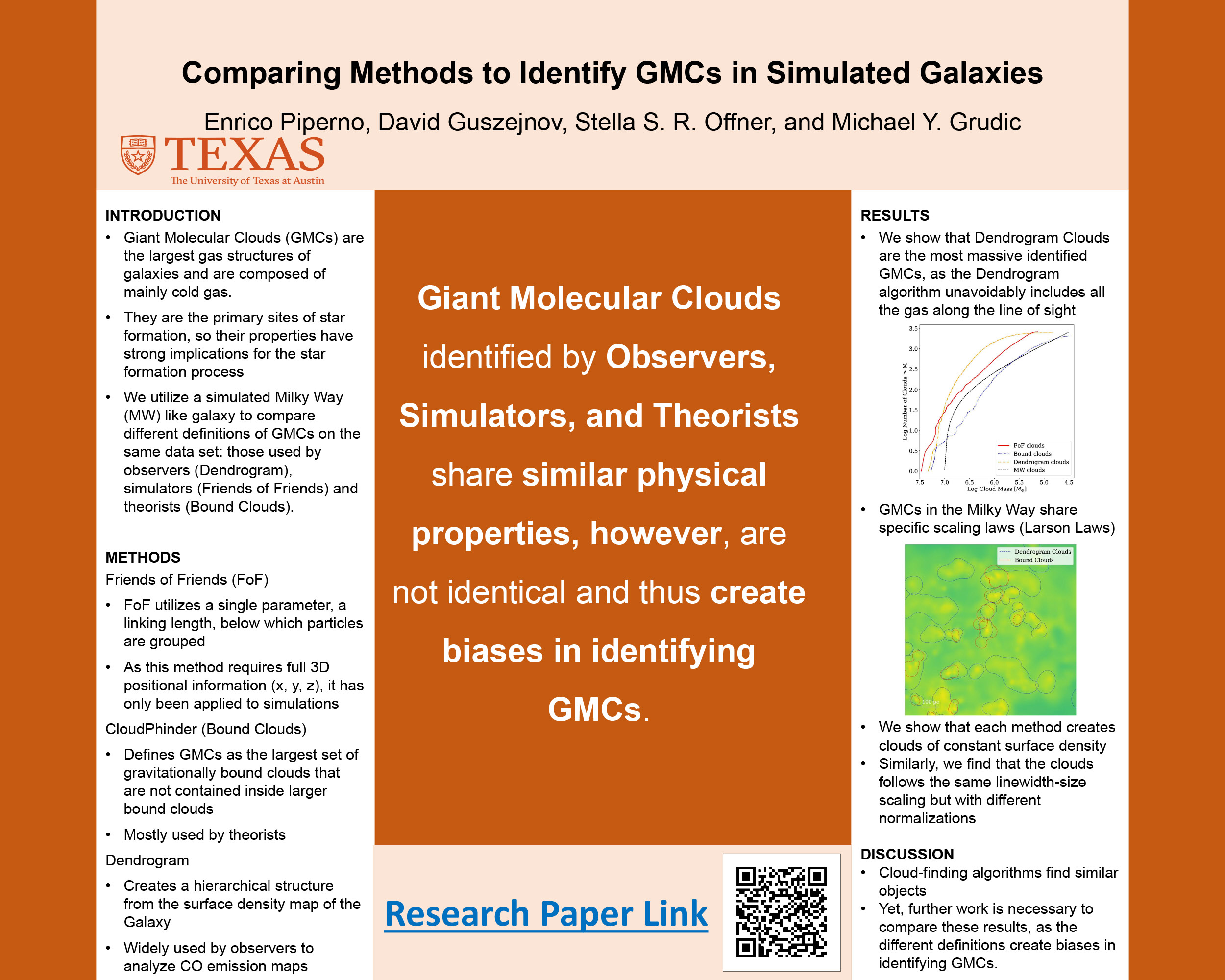Enrico Piperno
Giant Molecular Clouds (GMCs) are the largest gas structures of galaxies and are composed of mainly cold gas. They are the primary sites of star formation, so their properties have strong implications for the star formation process. We utilize a simulated Milky Way (MW) like galaxy to compare different definitions of GMCs on the same data set: those used by observers (Dendrogram), simulators (Friends of Friends) and theorists (Bound Clouds).

Comments
Though not my topic of study, it is such an interesting research topic! Thank you for sharing your research in a clear and concise way. Can you explain a little more on how and where the identification of GMCs can be utilized? —Hannah S Saji
Thank you for giving this type of poster design a shot. In this case, it works really well as a way to constrain the amount of detail and really hammer home the key takeaway. Good job! —Rob Reichle
This is super interesting research! Can y’all explain a little bit more why there are so many different ways of measuring GMCs? It seems like it specific to who is using the data; are they looking at different aspects of GMC and thus that creates these varying definitions of, I guess, what a GMC is/how to identify one? Are their methods being researched/developed into combining or finding a balance between all of the parameters being measured by these different methods in order to reduce biases and help regulate the identification process a little more? —Anna Hornsby
Great question! The reason as to why there are different methods to study GMCs is due to data that is available to scientists as well as the different properties of GMCs they are studying. For instance, say an observer desires to measure the mass of GMCs in the Milky Way Galaxy, he/she would take a CO emission map of regions of the Milky Way Galaxy and use the Dendrogram Algorithm to estimate locations and shapes of GMCs, moreover if they can infer the density of the Cloud they could find the mass. On the other hand, say a Theorist is interested in simulating star formation from collapsing GMCs. Since simulations of this kind usually require six-dimensional data: particle position (x, y, z) and particle velocity (vx, vy, vz), in order for them to group together particles in GMCs they could create a more accurate picture of what that GMC would look like by studying the mass distribution of the particles (CloudPhinder). Yes! There is research into finding a balance between the identification methods. The current project I’m working on is a continuation of this project. In order to further compare and thus improve the methods in identifying GMCs, we are simulating CO emissions from the simulated Milky Way Like Galaxy (Feedback in Realistic Environments (FIRE) Snapshot). We hope to find a way in which to relate GMC physical properties, thus allowing for identification of GMCs to be more accurate. —Enrico Piperno
Thank you for that—this is totally out of my realm of study, but that (and y’all’s poster) was super helpful in understanding what your project is doing/what GMC study is. I’m glad to hear that you’re working on a continuation of this! Best of luck, it sounds like a really great tool for this study to have. —Anna Hornsby

